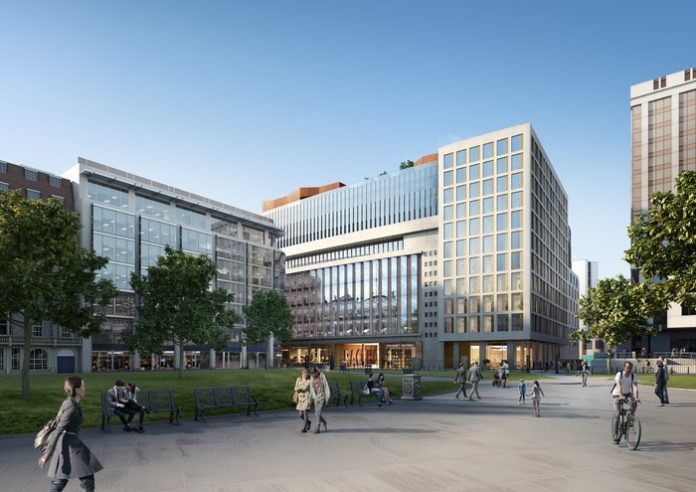Proposals for an innovative transformation of the former Rackham’s buildings to make best use of its outstanding location and space, are being prepared for submission to Birmingham City Council by owners LGIM Real Assets (Legal & General).
Meetings are currently being held with a range of local stakeholders while, as part of a wider public consultation, an online comment form can be completed and forwarded for consideration.
The Rackham’s buildings, located between Temple Row and Corporation Street in Birmingham city centre, have been under the ownership of Legal & General since 2014.
Legal & General had been in discussions about a reformatted store with the former owners of House of Fraser since its acquisition and, after House of Fraser entered a Company Voluntary Arrangement (CVA) in the summer of 2018, reached agreement with Sports Direct to allow the business to continue operating from the premises on a short term basis.
The proposals respond to changing patterns in retailing and strong demand for Grade A office floorspace. The proactive management and reimagining of the building responds directly to this opportunity to ensure longevity of use.
Sensitive refurbishment proposals have been designed by T P Bennett who, as architects of the original Rackham’s building, bring a unique insight alongside a contemporary approach to the reimagination of a durable and flexible building fit for use in the 21st Century. The proposals retain and enhance the original character of the building and are sympathetic to its setting overlooking St. Philip’s Cathedral and square.
Plans for the newly transformed building include nine floors of much-needed contemporary, Grade A offices and a new ‘boutique’ hotel on the corner of Cherry Street and Temple Row. There will also be a range of stylish bars, restaurants, coffee houses and retail space on the ground and lower ground floors, a west-facing terrace on the seventh floor and – with magnificent views over St. Philip’s Square – the city’s largest rooftop terrace and a restaurant.
The new offices will be accessed through a completely redesigned entrance and reception area on Temple Row that will also house a full height atrium and informal co-working space as well as the hotel reception lobby.
Simon Wilkes of LGIM Real Assets said; “In addition to providing a most welcome increase in the availability of Grade A office space to help meet growing demand in the city, these proposals will create a new cluster of attractive food, drink, retail and leisure facilities right in the city’s core.
“Rackham’s is one of the best situated buildings in Birmingham and we are very confident that its transformation with updated design and facilities, innovative range of uses and quality of materials will quickly attract new occupants, eager to benefit from the great potential of this wonderful space.
“This unique mix of uses and positive enhancement of what is one of the city’s most familiar properties will bring added vibrancy to the centre of Birmingham, bringing additional jobs and attracting more visitors.”
The refurbished buildings will deliver over 365,000 sq ft of office space over 9 floors, nearly 60,000 sq ft of retail and leisure facilities, a hotel of over 75,000 sq ft and more than 33,000 sq ft of restaurants, cafes and bars, together with communal space, a large atrium and external terraces.
Owners Legal &General are committed to several transformational schemes across Birmingham. Investments include the comprehensive redevelopment of the historic Lewis Building on Birmingham’s Bull Street, a 220 unit city centre Build to Rent development and the funding of Birmingham’s Arena Central 240,000 sq ft office scheme, which is let to the Government and represents the largest pre-let to take place in the city in a decade. The latest acquisition is of a leisure scheme, Birmingham’s Broadway Plaza.
Rackham’s was acquired by Harrods in 1955 who purchased the large island site to enable the construction of the new store to begin in 1957.
Harrods was itself taken over by House of Fraser In 1957. The new store then opened in several stages between 1960 and 1966 before being redeveloped during a refurbishment programme in the early 1980s.



















